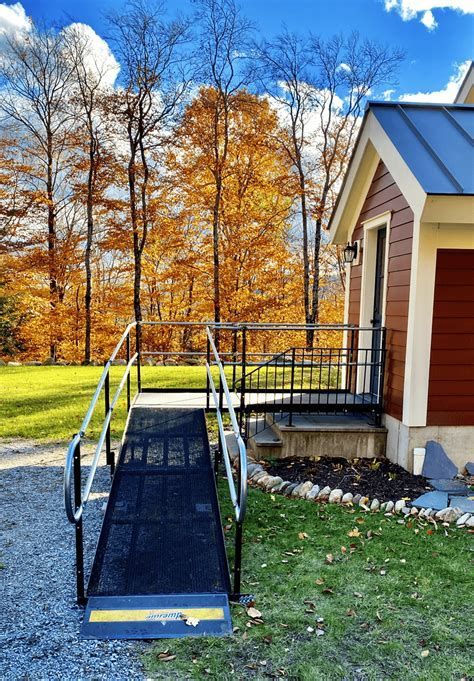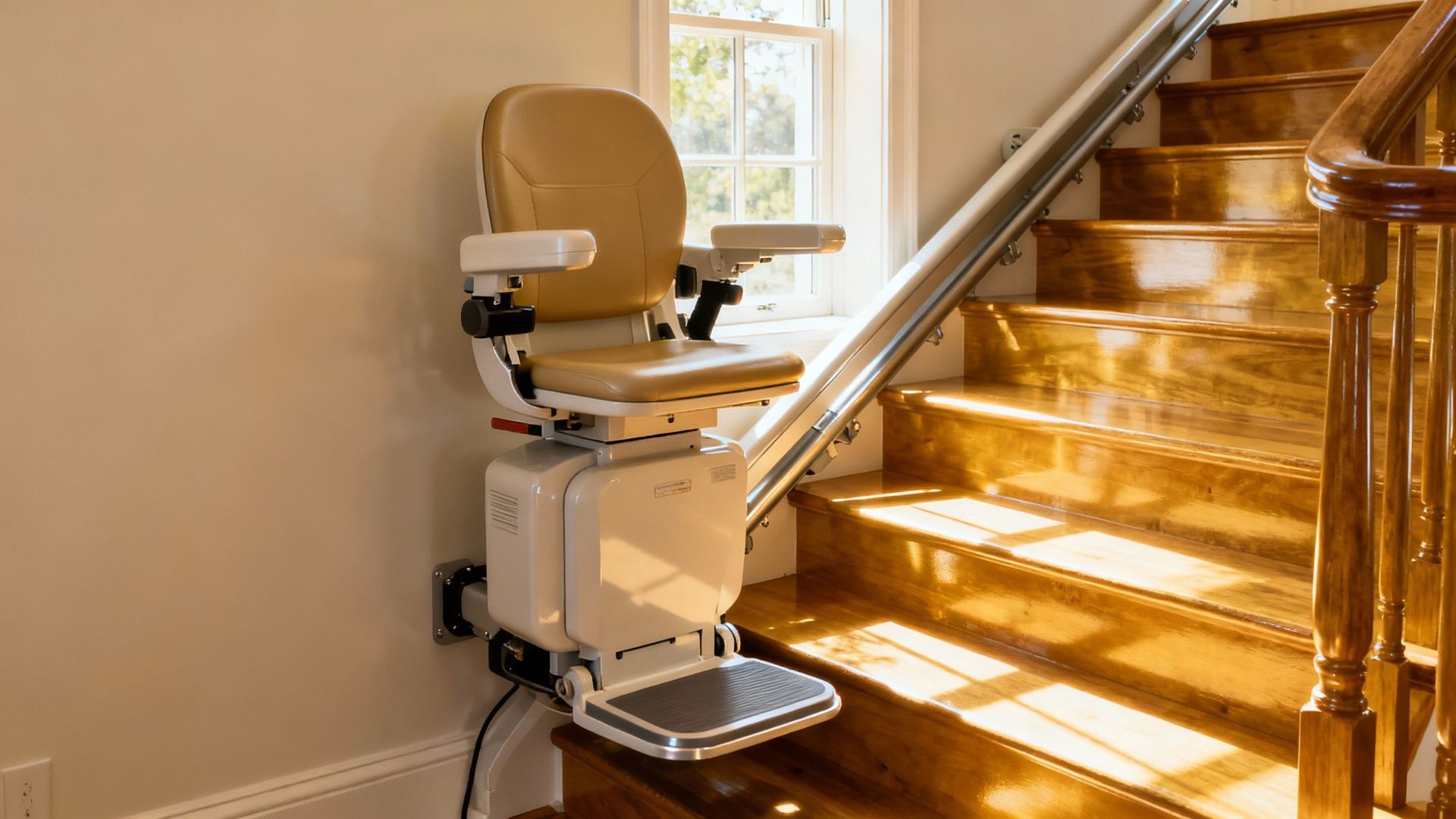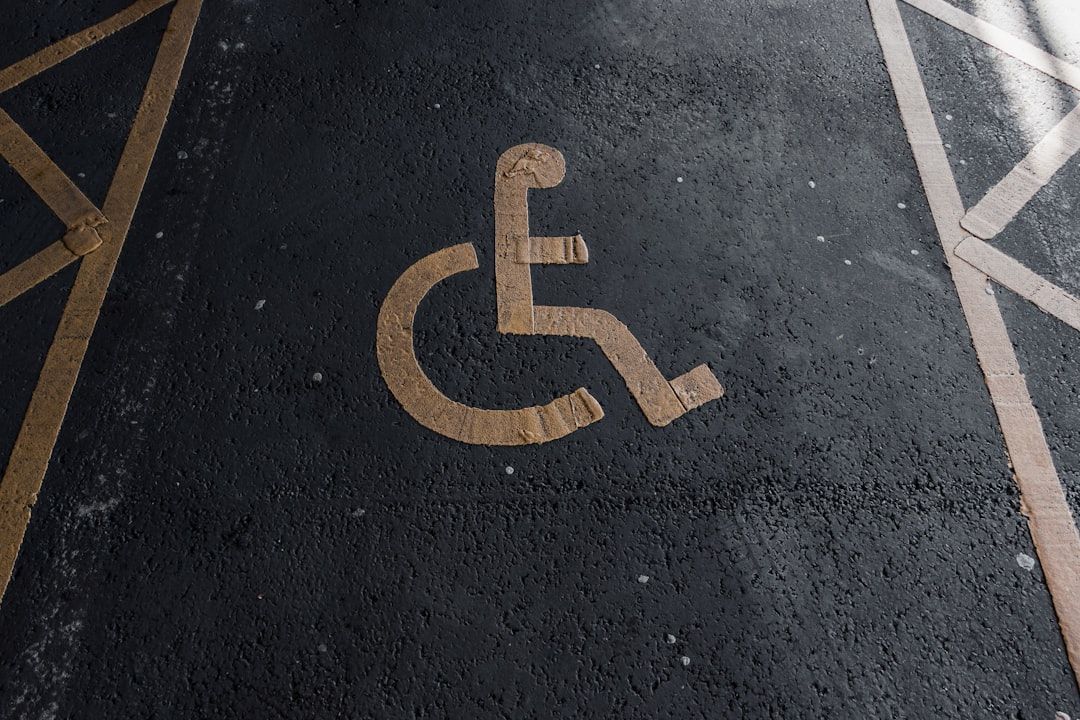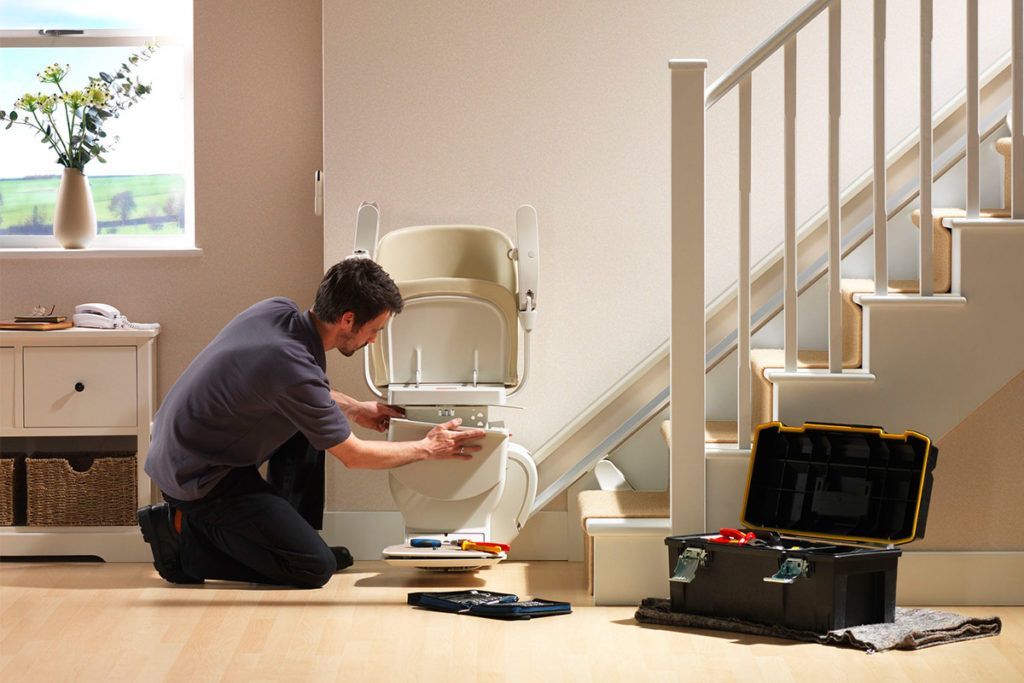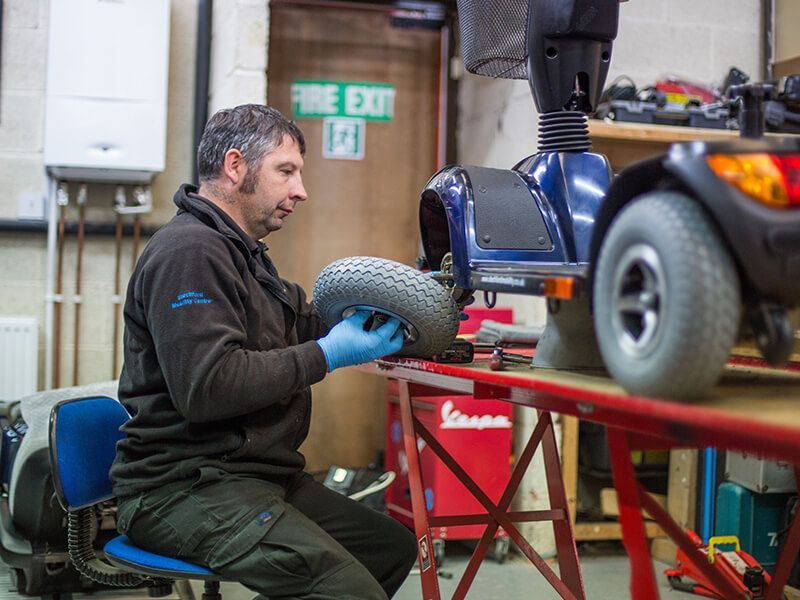How to Winterize Your Mobility Equipment in Dalton, LaFayette, Chattanooga & Surrounding Areas

Winter's coming to Dalton, LaFayette, and Chattanooga, and that means it's time to think about your mobility equipment. Just like you'd get your car ready for the cold, your scooter, wheelchair, or vehicle lift needs a little attention too. Proper winter prep means less hassle and keeps your equipment running smoothly when you need it most. Let's go over how to winterize mobility equipment so you can keep moving, no matter the weather.
Key Takeaways
- Keep your scooter's battery charged and protected from dampness. Make sure the tires have the right air pressure.
- Check your power wheelchair's motors and battery. Clean and oil any parts that move.
- Lubricate the moving parts on your vehicle lifts and ramps. Look for any rust on electrical bits and test everything out.
- Give your equipment a good clean all over. Store it somewhere dry and out of the elements. Always check the manual for specific winter tips.
- Be mindful of parts that could freeze. Clean off road salt and chemicals. Consider using covers if your equipment will be outside.
Prepare Your Mobility Scooter For Cold Weather
Winter's chill can be tough on your mobility scooter, but a little preparation goes a long way. Keeping your scooter in good shape means you can keep getting around town, even when the temperature drops. Let's look at a few key areas to focus on.
Inspect Battery Health And Charging Systems
Your scooter's battery is its powerhouse, and cold weather can really affect its performance. It's a good idea to check how healthy your battery is before winter really sets in. If you notice it's not holding a charge like it used to, or if it seems to be draining faster, it might be time for a replacement. Also, take a look at your charging system. Make sure the charger is working correctly and that the charging port on the scooter is clean and free of debris. A faulty charger or a dirty connection can prevent your battery from getting the power it needs, especially when it's working harder in the cold.
- Check battery voltage regularly.
- Clean battery terminals for a good connection.
- Ensure the charger is functioning properly.
Protect The Electronics From Moisture
Water and electronics don't mix well, and winter often brings rain, sleet, and snow. You'll want to make sure the sensitive electronic parts of your scooter are shielded from moisture. This includes the control panel, wiring, and any other exposed electrical components. Sometimes, a simple plastic bag or a dedicated scooter cover can do wonders to keep things dry. Pay attention to any seams or openings where water might seep in.
Moisture can cause corrosion and short circuits, leading to costly repairs. Taking preventative steps now can save you a lot of hassle down the road.
Ensure Tires Are Properly Inflated
Properly inflated tires are important year-round, but they become even more critical when the weather turns cold and surfaces can get slick. Underinflated tires can affect your scooter's handling and stability, which is the last thing you want when you're dealing with potentially icy patches or wet roads. Check the sidewall of your tires for the recommended pressure and use a reliable gauge to make sure they're just right. This helps maintain good traction and makes your ride smoother and safer. For more tips on keeping your mobility equipment ready for any season, check out mobility van preparation.
Winterize Your Power Wheelchair For Optimal Performance
When the temperatures drop, it's time to give your power wheelchair a little extra attention to keep it running smoothly. Cold weather can be tough on electronics and batteries, so a bit of preparation goes a long way. Taking these steps now can prevent unexpected issues down the road.
Check Motor And Drivetrain Components
Your power wheelchair's motors and drivetrain are the heart of its operation. Before winter really sets in, it's a good idea to give them a once-over. Listen for any unusual noises when you're operating the chair – grinding, squeaking, or clicking sounds could mean something needs adjustment or lubrication. Check that the wheels turn freely and that there's no excessive play in the axles. Keeping these parts clean and free from debris will help them perform better in colder, potentially wetter conditions. If you notice any wear or damage, it's best to get it looked at by a professional.
Secure And Insulate The Battery
Batteries are particularly sensitive to cold. Extreme temperatures can reduce their capacity and lifespan. Make sure your battery is securely fastened in its compartment. A loose battery can be damaged by vibrations, especially on rougher winter terrain. If your wheelchair has removable batteries, consider bringing them inside to a warmer location when the chair isn't in use for extended periods. Some users find that adding a bit of insulation around the battery compartment can help maintain a more stable temperature. For detailed battery care, you might want to consult your power wheelchair manual.
Clean And Lubricate Moving Parts
Winter often brings moisture, salt, and grit, which can wreak havoc on metal components. Take some time to clean all accessible moving parts, like the joystick, armrests, and seat mechanisms. Use a soft cloth to wipe away any dirt or grime. After cleaning, apply a light lubricant to any points that require it, following the manufacturer's recommendations. This helps prevent rust and keeps everything moving freely.
Winterizing your power wheelchair isn't just about preventing damage; it's about maintaining your independence and mobility when you need it most. A little proactive care can save you a lot of hassle and expense later on. Think of it as giving your chair a warm coat and a good meal before the cold season hits.
Regular checks and a bit of preventative maintenance will help ensure your power wheelchair is ready for whatever winter throws your way.
Safeguard Your Vehicle Lifts And Ramps
Vehicle lifts and ramps are lifelines for many, and keeping them in good shape during the colder months is pretty important. Cold weather can really do a number on moving parts, so a little attention now can save you a lot of hassle later. Regular checks and proper care will keep your equipment working when you need it most.
Lubricate Moving Joints And Actuators
Think of all the places your lift or ramp bends, pivots, and moves. These spots need a little help when it gets cold. Standard grease can get thick and sticky in low temperatures, making things stiff and hard to operate. It's a good idea to switch to a lubricant that's made for cold weather. This helps everything move freely, reducing strain on the motor and preventing jerky movements. You'll want to pay attention to:
- The main pivot points on the lift platform.
- Any hinges or joints on folding ramps.
- The actuator rod and its connection points.
Using the right kind of lubricant is key. For some equipment, you might need a specific type, so checking your user manual is always a smart move. If you're unsure, a quick call to a local provider can point you in the right direction. For some equipment, you might need to switch to low-temperature lubricants specifically recommended for winter use mobility aid.
Inspect Electrical Connections For Corrosion
Moisture and cold can team up to cause problems with electrical connections. Salt and de-icing chemicals kicked up from the road can also find their way to these parts. Over time, this can lead to corrosion, which messes with the flow of electricity. You should look for:
- Any signs of green or white powdery buildup on connectors.
- Loose or damaged wiring.
- Corrosion around the control box and battery terminals.
If you spot any corrosion, you can often clean it off gently with a wire brush and a bit of electrical contact cleaner. Make sure everything is dry before you reassemble or test.
Keeping these connections clean and tight helps prevent unexpected failures, especially when you're relying on your lift or ramp in less-than-ideal weather conditions. It's a small step that makes a big difference in reliability.
Test Operation In Colder Temperatures
Before you really need your lift or ramp in the thick of winter, give it a test run when it's actually cold out. This is the best way to catch any issues before they become a problem. Operate the lift or ramp through its full range of motion a few times. Listen for any strange noises, like grinding or squeaking, that weren't there before. Watch to see if it moves smoothly or if it seems to struggle. Testing it out now gives you a chance to address any sluggishness or performance dips while you still have time.
Essential Maintenance For All Mobility Devices
Taking care of your mobility equipment year-round is a good idea, but it's especially important when winter rolls around. A little bit of attention now can save you a lot of hassle later. Think of it like giving your device a good check-up before a long trip – you want to make sure everything is in good shape.
Clean Exterior Surfaces Thoroughly
Before the cold really sets in, give your mobility device a good scrub. This isn't just about making it look nice; it's about protection. Dirt, grime, and especially any salt or de-icing chemicals from the roads can really do a number on the finish and moving parts over time. Get into all the nooks and crannies. A clean surface is less likely to hold onto moisture, which is a big enemy in freezing temperatures.
Store Equipment In A Dry, Protected Area
When you're not using your mobility aid, try to keep it somewhere dry. Garages, sheds, or even a corner of your home can work. The main goal is to keep it out of the rain, snow, and harsh wind. Exposure to the elements can speed up wear and tear and lead to problems down the line. If you have to store it outside, even for a short while, consider using a sturdy, waterproof cover.
Review User Manual For Specific Winter Care
Every mobility device is a bit different, and the manufacturer usually knows best. Your user manual is your friend here. It will often have a section dedicated to maintenance and care, and sometimes it will even have specific tips for colder weather. It’s worth a quick read to see if there are any particular things you should be doing for your model.
Don't forget that even simple things like wiping down your device after each use, especially if it's been out in damp conditions, can make a big difference. It's the small, consistent efforts that really keep things running smoothly through the seasons.
Addressing Specific Winter Challenges For Mobility Aids
Winter in our area can bring some unique issues for mobility equipment. Cold temperatures and the elements can really test your device if you're not prepared. Let's look at some common problems and how to deal with them so you can keep moving around Dalton, LaFayette, and Chattanooga without too much trouble.
Prevent Freezing Of Moving Parts
Cold weather can make things stiff and even freeze up. This is especially true for parts that move a lot. Think about hinges, joints, and any mechanical linkages on your scooter, wheelchair, or lift. If water gets into these spots and freezes, it can cause damage or make the part impossible to move.
- Regularly check and lubricate all moving parts. Use a lubricant that's rated for cold temperatures. This helps push out any moisture and keeps things from seizing up.
- After using your equipment in wet or snowy conditions, wipe down any exposed joints and mechanisms to remove excess water.
- If you notice any stiffness, try to gently work the part back and forth to loosen it up before it gets worse.
Manage Salt And De-icing Chemical Exposure
Road salt and de-icing chemicals are a fact of life in the winter. While they help keep roads clear, they can be really harsh on your mobility equipment. These substances can cause metal parts to rust and corrode, and they can also damage plastic and rubber components.
- Rinse your equipment with plain water after exposure to salt or de-icing chemicals. Pay close attention to the wheels, frame, and any metal components.
- Dry everything thoroughly afterward. A soft cloth works well for this.
- Consider applying a protective coating or wax to metal parts. This can create a barrier against corrosion.
Consider Protective Covers For Outdoor Storage
If you have to store your mobility device outside, even for short periods, a good cover is a must. It's your first line of defense against snow, ice, rain, and the general grime that winter brings.
- Invest in a durable, waterproof cover that fits your specific device. A cover that's too loose might blow off, and one that's too tight could trap moisture.
- Make sure the cover fully encloses the equipment, including the wheels and any exposed electronics, to keep moisture out.
- If possible, try to store your equipment under some kind of shelter, like a carport or covered porch, even with a cover on. This adds an extra layer of protection.
Winterizing your mobility aid isn't just about making it look good; it's about keeping it working reliably when you need it most. Taking these steps can save you a lot of hassle and expense down the road, ensuring you can maintain your independence throughout the colder months.
Winter can be tough on mobility aids, making everyday tasks harder. From slippery sidewalks to icy paths, navigating the cold season requires special care for your equipment. Don't let winter slow you down! Visit our website to discover tips and find the right gear to keep you moving safely and comfortably all season long.
Wrapping Up Your Winter Prep
So, there you have it. Taking a little time now to get your mobility equipment ready for the colder months can save you a lot of hassle later. Think of it like putting on a warm coat before you head out – it just makes things easier and safer. Whether you're in Dalton, LaFayette, Chattanooga, or anywhere nearby, a little preparation goes a long way. If you're feeling overwhelmed or just want a professional check-up, remember places like North Georgia Mobility are around to help. They've been doing this for a long time and really know their stuff when it comes to keeping you moving, no matter the weather. Don't let winter catch you off guard; get your equipment winter-ready and enjoy the season with confidence.
Frequently Asked Questions
Why is it important to get my mobility scooter ready for winter?
Cold weather can be tough on your scooter's battery and electronics. Taking steps to prepare it helps make sure it runs smoothly and reliably when you need it most, preventing unexpected problems during those chilly months.
How can I protect my power wheelchair from the cold and damp?
Keeping your power wheelchair's battery charged and protected from moisture is key. Also, making sure the motors and moving parts are clean and well-lubricated will help it work its best, even when it's cold outside.
What should I do to keep my vehicle lifts and ramps working in winter?
Lubricating the moving parts of your lifts and ramps is super important. You'll also want to check that all the electrical bits are clean and not rusty, and give them a test run in cooler weather to be sure they're good to go.
Are there any special cleaning tips for mobility equipment in winter?
Yes, it's a great idea to give your mobility equipment a good cleaning before winter really sets in. Getting rid of dirt and grime helps prevent issues. And always try to store your equipment somewhere dry and covered when you're not using it.
What's the biggest winter challenge for mobility aids?
One of the main worries is things freezing up, especially moving parts. Also, you'll want to be mindful of road salt and chemicals used to melt ice, as they can cause damage. Using protective covers can really help shield your equipment.
Where can I get help with winterizing my mobility equipment in the Dalton and Chattanooga areas?
For nearly 30 years, North Georgia Mobility in Ringgold, Georgia, has been helping people with accessibility solutions. They specialize in mobility aids and can offer expert advice and services to get your equipment ready for winter. They're VA approved and serve North Georgia and Southeast Tennessee.
